New Water Services Institution Developed to Tackle Multi-Dimensional Tasks
The new institution seeks to fix some of the current issues stunting major developments in the sector
![]()
Hailemeskel Tefera, left, state minister of the Ministry of Urban Housing & Construction and Board chairperson of the WWDSE, and the minister of Water, Irrigation & Energy, Alemayehu Tegenu, were in the midst of an animated discussion about the establishment of the Ethiopian Water Development Engineering Service.
![]()
Hailemeskel Tefera, (Eng.) state minister for Urban Development Housing & Construction, right, and Meberate Tafese (PhD), head of Water Works Design & Supervision Enterprise and member of the Technical Committee, left, trying to explain how the new Ethiopian Water Development Engineering Service Corporation is going to help realize the sustainable development of the country.
The Ethiopian water sector is soon to see the establishment of the Ethiopian Water Development Engineering Service. This will replace the Federal Water Works Design and Supervision Enterprise (WWDSE), in two months of time.
The need for undertaking multi-dimensional tasks has necessitated the establishment of the new institution. Under the supervision of the federal government, it will mainly consist of different research institutes and will be involved in various water development and supervision strategies. Also, this corporation will be under the Supervision of the federal government. The current institution, the WWDSE, is only engaged in water development and supervision.
“Establishing a strengthened water sector design and supervision is pivotal to realising the sustainable development of the country,” Hailemeskel Tefera, state minister of the Ministry of Urban Housing & Construction and Board chairperson of the WWDSE, said at a panel discussion on Saturday, January 11, 2014, at the Ghion Hotel. The discussion sought to solicit comments and suggestions on the establishment of the new institution.
Experts, who presented study papers, pointed out some of the barriers faced by the sector. Incompatibility of the institutional setup to the demands of complex projects, a lack of systems, low level technology usage, a shortage of skilled manpower in some specialised fields and limited experience in study, were highlighted as challenges.
Some of the studies pointed out reasons for the delay in the Tendaho and Kessem dam and irrigation projects.
“They could not be completed within the time framework because of the different framework challenges,” one study indicated. “Project management problems, lack of alternate project delivery arrangements and fast track project management, coupled with Institutional setup have slowed down the projects.”
Ethiopia’s national water access reached 61.6 pc (over 52 million beneficiaries) of the population up until late 2012/13. Rural water access has reached 58.7pc (over 43 million beneficiaries) and urban water access has reached 80.7pc.
According to the growth & transformation plan (GTP), a household in a rural area has to have a supply of around 15 litres of safe water per person per day within a 1.5 km radius. Similarly, the GTP defines the clean water supply for urban dwellers – 20 litres of potable water per person per day within a 0.5 km radius. Based on this plan, over 29 million people living in rural areas are expected to become beneficiaries of safe drinking water by 2015.
http://addisfortune.net/articles/new-water-services-institution-developed-to-tackle-multi-dimensional-tasks/
.
Hard Work but Dwindling Return
![]()
The price of raw leather has been fluctuating since last Christmas and the Ethiopian New Year holiday in September, when a sheep skin sold at 80 Br, on average.
![]()
Some like Abera Getachew, right, with ample experience plough through the arduous way and succeeding.
Early morning on Tuesday, January 7, 2014 – Ethiopian Christmas Day – Abadir Wayo slaughtered three sheep and a goat for four of his customers. When all was done, he headed to the market around Saris, on the Debre Zeit road, to sell the skins, which he receives as payment for his slaughtering service.
Unlike the previous holidays, Abadir, who works as a daily labourer, did not pay any extra money to his clients for the skins. This is since they are fetching a lower price at market.
‘‘I used to pay an extra 25 Br to 30 Br after receiving the skins,’’ Abadir told Fortune. ‘‘However, currently the sheep skins bring back a relatively low return in the market.’’
Although Abadir did not pay anything for taking the sheep skins, he received an additional 35 Br for his service of slaughtering the goat. This is because goat skin fetches a much lower price than the sheep skin.
At around 9 am, Abadir sold the goat skin for 25 Br to Bekele Ketema, who has been in the business of collecting skins for the last 10 years. However, he did not succeed in selling the sheep skins, since he asked Bekele to pay him 55 Br for each.
Bekele collects raw skins in his booth located around the Saris area. The booth was donated by USAID for skin collectors to sell skins, without affecting its quality, to skin collectors that then supply the skin to leather factories.
Bekele had been collecting the skins since 6 am on Tuesday, and had amassed 70 by the time Abadir arrived. This is a sharp increase from the other holidays, where he often accumulated only around 20 skins a day.
Bekele bought sheep and goat skins for 50 Br and 25 Br, respectively, mostly from households that slaughter the animals for the holiday. He would later sell the skin to factory suppliers, who travel around the city in the afternoon, for 53 Br, he claims.
The price of raw leather has been fluctuating since last Christmas and the Ethiopian New Year holiday in September, when a sheep skin sold at 80 Br, on average, and each goat skin fetched 30 Br. Cattle skin, which can weigh up to 48Kgs, sold for 3.50 Br a kilo at the time.
During the current holiday season, Bekele could not accommodate the needs of Abadir, however, since he was anticipating a lower return from the sheep skins.
‘‘I am surprised by the sudden drop in the price of sheep skin,’’ Abadir told Fortune.
The prices were falling nearly everywhere in Addis Abeba, hence Abadir could not have succeeded with the price he requested. At the area around the premises of the Addis Abeba Exhibition & Marketing Development Enterprise, near Mesqel Square, Taye Bobolibo, another raw skin collector, was buying sheep skin for an even lower price of between 45Br to 50 Br
Kedir Wahid – another skin collector, around the Anwar Mosque area, near Merkato (the largest open-air market in Africa) – bought sheep skin with more or less the same price to that of Taye at the Exhibition Centre.
The reason for the drop in price of raw skin is unclear to the likes of Taye and Bekele. They claim to sell the skins with prices set by their buyers, who later submit it to one of the 29 suppliers in Addis Abeba.
Sheriff Ahmed is Taye’s customer. He supplies raw skin to tanneries and leather factories. He says that this Christmas sale stands out as different from previous times, as the tanneries and leather factories demand less skin with a higher quality.
Although Ethiopia has a definite comparative advantage, with a large livestock population, easy access to quality hides is lower when compared to neighbouring countries. During the 2011/12 fiscal year, the total population of cattle was 53.3 million, while sheep and goats numbered 25.5 million and 22.7 million, respectively, according to the Central Statistical Agency (CSA).
Ethiopia’s cattle population is far greater when compared to that of Kenya and Sudan, which have a population of 11.7 million and 39.8 million, respectively. When comparing sheep and goat populations, Kenya has 1.7 million and 24.7 million, respectively, while Sudan has 48.9 million and 39.8 million.
Despite having a large population, the proportion of cattle consumed in Ethiopia is only seven percent, compared to 10pc and 20pc for Kenya and Sudan.
The proportion of sheep and goat consumed in Ethiopia is 33pc and 38pc, respectively, compared to 30pc and 29pc in Kenya and 45pc and 30pc in Sudan.
The price of sheep skin has declined, since the demand from tanneries and leather factories is limited at this time, claims an expert working with the Ethiopian Skin & Hides Suppliers Association,
The price of a sheep skin, which is originally bought for 55 Br on average from people like Abadir, is sold for around 75 Br when it reaches the tanneries and leather factories.
‘‘The market of skin depends upon the demand from the factories,’’ says Belete Abadi, an expert on leather industry, who has worked in the industry for several years.
Tanneries do not deny this. Some of them have made the choice of postponing plans to buy skins from the market during the current holiday season.
A managing director of a foreign tannery, which produces finished sheep skins, goat skins and hide products for gloves, shoe uppers, garments and linings, as well as cow hide products for leather goods, admitted that his company will not purchase raw hides and skins from its suppliers, since the company has enough stock in its warehouse.
The company has been utilising 75pc of its capacity, since the demand in the international market is declining. It has the capacity to process 70,000 sheep skins and 1,500 cow hides, annually.
‘‘We cannot be competitive in the international market, if we keep going to buy animal skins locally at a high price,’’ he claimed.
Some tanneries, which collect the raw skins from its customers, found the current price surprising and encouraging.
The higher raw material prices incurred by most of the tanneries operating in the country is in addition to the levy of export tax imposed on unfinished leather products since 2012.
This measure is intended to realise the vision of the government for the leather industry, by introducing a 150pc tax on the export of crust leather.
The last half decade has not been as successful for the leather sector as the government had planned. The government’s plan of collecting close to half a billion dollars in revenue from exports at the end of its previous five-year economic plan, which ended in 2009/10, was not achieved. Only 205 million dollars were collected. Part of the reason for this failure is that 20 of the 26 leather exporters export only crusted leather, while only six export finished leather.
Before the introduction of the export tax, most of the income from leather exports came from crusted leather. This accounted for 67.3pc of the 104.1 million dollars earned during the 2010/11 fiscal year. The plan was to achieve 180.4 million dollars.
Although the introduction of export tax failed to achieve the government plan, as outlined in the Growth & Transformation Plan (GTP), it discouraged the export of crust once and for all. The government envisions earning one billion dollars from the export of leather products by the end of the 2014/15 fiscal year.
In the just ended fiscal year, the country earned only 308,000 dollars from the export of 14tns of crust. Two years before the introduction of the export tax, the country secured 74 million dollars by exporting 4,062tns of crust. But the export earnings from finished products increased to 121 million dollars.
However, this seems not enough for the Ethiopian Leather Industries Association (ELIA), which have close to 50 factories involved in the leather industry as members. The price has to go even lower, the Association says.
Leather factories were unable to clear their unpaid bills, as their input cost is much higher than their final price in the international market, Belete, the expert, claims.
But this is against a new law adopted by Parliament in December, which was expected to reduce the number of middlemen in the market chain. According to the government, their presence is the main reason for the inflated prices.
The amended bill aims to make the process of raw skin sale transparent. With the amended bill, all trading between tanneries and suppliers will be conducted after the former has signed an agreement with the latter.
For Sheriff, the drop in price means an improved opportunity for buying more skins. This would increase his profits, if suppliers are willing to buy.
‘‘My profit is around five Br, whether the price remains the same or not,’’ Sheriff told Fortune.
http://addisfortune.net/articles/hard-work-but-dwindling-return/
.
Faltering Flower Fortunes
![]()
The flower industry is the fifth most important foreign exchange earner in Ethiopia, after the narcotic crop, khat.
![]()
In spite of the challenges, Ethiopia’s flower industry has utilised 1,300ha of land and repatriated 260 million dollars from floriculture and 50 million dollars from fruits and vegetables.
Gemeda Dadi, 21, was jobless for three full years before joining Sher Ethiopia Plc -a huge flower firm in Ethiopia, contributing to 65pc of the aggregate Ethiopian horticulture export.
Sher’s headquarters is located in Ziway town in Oromia Regional State, 163km from Addis Abeba. Its entry into the burgeoning Ethiopian flower industry in 2005 was a landmark event, as it became the largest farm in Ethiopia, occupying 500ht. It had already been engaged in Kenya for over 15 years. It is currently requesting for even more land from the Ethiopian authorities.
The Company had created13,000 jobs for residents of Ziway and its environs.
Most of the people Fortune approached are happy with the Company’s investment in social infrastructure.
“Sher has not only been benefiting me, but my whole family,” says Gemeda, who was working in the flower farm on a sunny afternoon, on January 3, 2014.
In 2004, the two Dutch owners of Sher, Gerrit and Peter Barnhoorn, were invited by the Ethiopian government to set up a project in Ethiopia. They were particularly emboldened by the support and encouragement they received from Ethiopia’s late Prime Minister, Meles Zenawi, they say.
Despite its late entry into the market, the Ethiopian horticultural industry has been a success story, marking the nation’s entry into a non-traditional export product. Ethiopia is the second largest exporter in Africa, after Kenya, and ahead of Tanzania, Uganda and Zimbabwe. It is also the fifth largest non-EU exporter to the EU cut flower market.
“It has taken Ethiopia five years to reach half of what Kenya achieved in three decades,” reported Kenya’s Daily Nation newspaper in 2007. “At this rate, Kenya could be overtaken by Ethiopia in a decade.”
This sector earned 94 million dollars for Ethiopia in 2007, while Kenya earned a whopping 364 million dollars.
Ethiopia’s fast progress “left Kenya stunned,” the paper added, despite Kenya’s fourfold revenue.
But it is far from an entirely rosy picture, as the sector is also operating with many challenges. These require government intervention, according to the flower company owners. Ethiopia’s new investment policy lacks an understanding of the sector, in terms of relevant incentives, some say, and there is a lack of access to land for expansion; air freight cost is high.
“We operate under challenges, including power cuts, connection problems and improper cargo services,” Kamal Hussein, Sher’s public relations officer, told Fortune.
Jagdish Mahajan, farm manager and representative of Joytech Fresh – another of the foreign flower companies operating in Ethiopia-shared Kamal’s frustration.
“Whenever the electric is down, all the fans and the cooling room will stop working,” he said. “Hence, the greenhouse temperature will rise, wilting the plants.”
He and other mangers in the sector lamented being unable to their customers’ needs due to power cuts.
“I am not even sure if we can continue in this frustrating condition,” Jagidish grumbled.
Maranque Plant Plc is another company in the sector facing logistical challenges not of its own making. Located in Alaga Dore, 125 kms from Addis Abeba, in the Arsi Zone of Oromia Regional State, the company faces challenges that it says that reduce its ability to generate more foreign currency and meet the target the government has set.
Although witnessing an increment in its flower cutting in 2013, with 360 million cuttings exported mainly to Japan, the Netherlands, South Africa and the US, it complains of complications in cargo services, among other challenges.
“Our main challenge is the cargo service,” Hebelom Tamerat, export department head at Maranque, told Fortune.
Initially, the Company was using KLM Royal Dutch Airlines, which had direct flight from Addis Abeba to Amsterdam – its main market destination.
When KLM terminated its Addis-Amsterdam flights in March 2013,Maranque was forced to use Ethiopian Airlines (EAL), which has a stopover in Belgium, causing delays.
“Sometimes, we also face delays, due to offloading and improper handling from EAL,” said Hebelom.
Some, like the Sher, which faced the same problem, have even gone to the extent of requesting that the government allows them to purchase their own aircrafts. They will then be able to transport roses more quickly and conveniently.
Although the flower exporters expect remedies for the challenges they face, the response from the Ethiopian Horticulture Development Agency (EHDA), is hardly an indication of remedy coming in the near future.
“The complaints are far too exaggerated,” says Mekonnen Hailu, public relations officer with the Agency. “They have been benefitting from the attractive incentives the Agency has devised to support the horticulture sector.”
Mekonnen cites the tax holiday period to validate this argument. Initially, only five years was given as a tax holiday period to the companies. This time around, however, it has been extended to seven years. The Agency’s experts, he says, have been providing assistance in technical and environmental aspects.
Tilaye Bekele, executive director of the Ethiopian Horticulture Producer Exporters Association (EHPEA), argues the government could do more. He argued that the lack of a competitive cargo service, in addition to the absence of consolidated services is hampering the performance of the sector.
Out of 120 foreign and local flower companies operating in Ethiopia, 96 are members of the Ethiopian Horticulture Producer Exporters Association (EHPEA). Seventy-three out of the 120 investors invested through Foreign Direct Investment (FDI), while 11 are joint ventures and 36 are local companies.
http://addisfortune.net/columns/faltering-flower-fortunes/
.
Investment Agency Invites Local Manufacturing Companies Into Industrial Zones
The offer doesn’t include foreign companies, as the Investment Agency wants to encourage local ones
![]()
Addis Abeba City Administration Cabinet will expects to approve the Land Bank & Transfer Agency plan format.
The Addis Abeba Investment Agency (AAIA) is inviting local investors in the manufacturing sector to work on the 330ha of land it has allotted in the Nefas Silk Lafto and Akaki Kaliti districts.
This offer, made only to local businesses, will have leases prices fixed through negotiation, said Kidanemihret Berhe, director of the AAIA.
The Land Bank & Transfer Agency developed plan formats for three industrial zones – one in Akaki Kaliti and two in Nefas Silk Lafto – which have now been submitted to the Cabinet of the Addis Abeba City Administration for approval, according to Masre Yemam, sub-process head with the Land Bank & Transfer Agency.
There are already industrial zones in both the Akaki Kaliti and Lafto districts, each covering 2,800sqm. The companies, which have leased plots in the zones are engaged in the garment, shoes, agro-processing and metal manufacturing sectors. The AAIA says it has invited investors to take plots in the industrial zones for two reasons.
Textile and garment, leather products, agro-processing and chemical products have been prioritised by the new offer, he said.
Agriculture is the primary source of employment for the Ethiopian economy. It contributes 43.2pc to national production and provides employment to more than 80pc of the working population. The manufacturing sector, which grew by 18.5pc in 2012/13, accounts for only 13pc.
The offer is for local investors, the Diaspora and mid-scale enterprises. The latter are those who have graduated successfully from SMEs with capital investment growth. Foreign investors are excluded because the Agency aims to encourage local ones, Kidanemihrei said.
“The AAIA decided to allocate land for investors, taking into consideration the fact that many local investors went as far as to erect warehouses on land leased from other investors,” he added.
The size of the land to be leased for each of the investors will be decided based on the project that they submit to the Agency.
The Agency will evaluate investment projects and transfer them to the Land Bank & Transfer Agency, which will facilitate the process. The proposals will then be sent to the City Administration’s Cabinet for final approval.
Infrastructure, like roads, water, electricity and telephone, have already been installed in the zones. A technical committee under the AAIA is to work on the remaining infrastructural facilities, according to Kindanemihret.
The Agency has responsibilities to promote the investment potential of the city, deliver efficient services to investors and conduct proper follow ups and strengthen the support service to investors.
http://addisfortune.net/articles/investment-agency-invites-local-manufacturing-companies-into-industrial-zones/
.
Electronic System to Replace Plastic MobileTop-Up Cards
The foreign currency spent importing the plastic cards will be saved with the introduction of a new paper system
![]()
Kifya runs the 31 Lehulu centres and provides one window electronic billing service to 1.1 million bill paying customers to pay their water, electric and telephone bills.
Kifiya Financial Technology Plc (KFT) is working with Ethio-Telecom to introduce an electronic airtime distribution service. This will be designed to be a cheaper replacement of the existing scratch cards used for prepaid mobile customers.
Ethio-Telecom’s Corporate Communications director, Abdurahim Ahmed, declined to make any comment, but the service could become a reality in two weeks, according to Eyob Getahun, Public Relations head at Kifya.
When launched, the electronic airtime distribution service will replace the common scratch cards. The very objective of the project is to cut down on the foreign currency spent on the purchase of the plastic mobile airtime cards. Although the paper airtime recharging e-cards will also be imported, their cost will be significantly less, says Kifya.
“The cost of the scratch cards is too high and cards need complex printing and complicated distribution networks,” Eyob Getahun, public relations officer of Kifya, said. “On top of that, they are not environmentally friendly.”
Unlike with the current scratch card, the pin number would be printed on paper from an e-card terminal. These would be designed to print the numbers from data stored on Ethio-Telecom’s server online, using a private network GSM (Global Station for Mobile Communication). The terminal owner would insert a password and username to print the airtime required, and sell it on the spot.
“Through the studies, it has been proven that the project is viable,” Eyob said. “Kifya will, thus, implement the new scheme soon.”
Abdurahim Ahmed, the corporate communications director at Ethio-Telecom, did not comment to Fortune, despite repeated efforts.
Ethio-Telecom has so far been availing scratch cards worth five Birr, 10 Br, 15Br, 25Br, 50 Br and 100Br only. The new service will, however, provide customers with the option of recharging any amount.
Fortune has learnt that Kifya has recruited new staff from its branches and has been offering them training at its headquarters at the Finfinnee Building, around Meskel Square.
The agreement with Ethio-Telecom is expected to evolve into a scheme in which private vendors will lease airtime from them to distribute to customers.
Established in 2010, Kifya runs the 31 Lehulu centres and provides one window electronic billing service to 1.1 million bill paying customers to pay their water, electric and telephone bills.
http://addisfortune.net/articles/electronic-system-to-replace-plastic-mobiletop-up-cards/
.
Ethiopian Red Cross Fundraising For Half Billion Birr Headquarters
The new building will provide a rental income, making the organisation less reliant on foreign aid
![]()
Ahmed Reja, left, (PhD), president of the ERCS, was glad that he met people like Tadele Yemer, middle, president of the Ethiopian Employers Federation (EFF) and Fissehatsion Biyadegelegn, president of the Confederation of Ethiopian Labor Unions (CELU), pledged to support to the project.
The Ethiopian Red Cross Society (ERCS) is looking to raise 27 million Br in a year’s time for the construction of its new multipurpose headquarters, through the “One Birr for Humanity” fundraising project.
The 16-storey building is expected to cost 500 million Birr, but so far the ERCS has only managed to raise 22.8 million Br. These funds were acquired through an SMS lottery game, launched in 2013.
The building will rest on a 4,936sqm plot of land next to the Addis Abeba Spa Services Enterprise along Yohannes St – near Zewditu Hospital. The plot was granted to the ERCS for free by the Addis Abeba City Administration, in 1997.
DMC Construction has been awarded the first phase of construction (structural framework and concrete work) for 187 million Br.
With the reduction in funds from foreign and local charities because of the increasing number of people, who seek assistance, the Society turned to community-based fundraising options, such as the SMS game it already had.
“We are also looking for government support to secure the remaining funds,” Dr Ahmed Reja, president of the ERCS, said during the launch of the fundraising project at the Hilton Addis, on Thursday, January 9, 2014.
The building, when completed, is expected to generate income from rent for the ERCS. Generating income will decrease the organisation’s dependence on foreign aid, which has been declining recently, and increase its capacity to do its humanitarian work, said Dr Ahmed.
“Anyone interested in the project can support this fundraising in kind, financially and even in knowledge sharing, as well as labour,” Ahmed said.
When established on July 8, 1935 in Addis Abeba in the aftermath of the Italo-Ethiopian War (1935-41), the ERCS was pioneered by the Russian Red Cross Medical Team. It aims to work on food security, disaster preparedness, community health, first aid, ambulance services, blood banks and an essential drugs program. It has several projects, including environmental protection and poverty reduction, as well as helping returned refugees, says Frehiwot Worku, the Society’s Secretary General.
The revised charter of the ERCS allows it to collect money from different sources. This includes the proceeds of various income generating programmes they run.
The ERCS is currently based in a building adjacent to Ghandi Memorial Hospital along Ras Desta Damtew Street, which it has owned for the last 40 years.
http://addisfortune.net/articles/ethiopian-red-cross-fundraising-for-half-billion-birr-headquarters/
.
Ethiopian Airports Enterprise plans new Airport for Awassa
Addis Ababa, 14 January 2014 (WIC) – The Ethiopian Airports Enterprise (EAE) announced that a location for the building of a new airport at Aawasa has been acquired and the design work is under
In the last Ethiopian fiscal year alone, Awasa, which is the capital city of the Southern Region, is visited by more than 631,000 Ethiopians and foreign tourists that help for the gain of 130 million Br in revenue.
It is indicated that the way of transportation to the city being limited to the road transport only, greatly hinders the great many visitors that might want to have air transport to come to the city. For the building of the airport, the Ethiopian Airports Enterprise has received a land and the design work is being done with the cost of one million Birr which is believed to be completed in four months time.
http://www.waltainfo.com/index.php/explore/11998-ethiopian-airports-enterprise-plans-new-airport-for-awassa
.
Prime Minister Hailemariam Desalegn Confers With Japan’s Prime Minister Shinzo Abe
Japan’s Prime Minister Shinzo Abe arrived in Addis Ababa on Monday (January 13) at the head of a 50-person delegation of senior officials, parliamentarians and business leaders.
Prime Minister Hailemariam and high-level Ethiopian officials welcomed Prime Minister Abe, his wide and the delegation at Bole International Airport before holding discussions at the Jubilee Palace.
Prime Minister Hailemariam noted that “Ethio-Japanese relations, dating back over 85 years, had now reached qualitatively higher levels.”
He underlined and reaffirmed Ethiopia’s contributions to the Tokyo International Conference on African Development (TICAD) and expressed his hopes that Japan would implement the TICAD V Declaration and Plan of Action in collaboration with the African Union.
Prime Minister Hailemariam stressed the importance of increasing Japanese investment in Ethiopia to help Ethiopia maintain the double digit growth it had witnessed over the past decade.
He requested Prime Minister Abe’s support for Japan’s Trade and External Office (JETRO) to open offices in Addis Ababa, the diplomatic hub of Africa, to boost trade and investment ties not only with Ethiopia but also with Africa as a whole.
He said Ethiopia’s rapidly improving institutional capacity, stable macro-economy, and conducive investment climate as well as its friendly and hospitable people and growing market offers attractive business opportunities for Japanese investors.
He urged to Japanese investors to take part in Ethiopia’s manufacturing sector, especially in energy development and railway management as well as in production of rice in the area of agricultural investment in which Japan excels.
Prime Minister Hailemariam appreciated Japan’s immense contribution in technical assistance to Ethiopia’s development, noting that Ethiopia has adopted Kaizen as a philosophy in the nation’s moves to improve quality and productivity, and expressed Ethiopia’s desire to benefit from the Abe Initiative.
Prime Minister Shinzo Abe stressed that Japan would continue to support Ethiopia’s development endeavors, sharing experiences through the Ethio-Japan Industrial Policy Dialogue. He underlined that Japan would like to expand Ethiopia’s Kaizen Institute into a TICAD Human Resource Development Center for Africa.
He promised to consider opening a JETRO office in Addis Ababa after looking at the trade volumes and investment climate changes in Ethiopia.
Prime Minister Abe announced his government’s decision to offer a 520 million yen support to improve the productivity of underprivileged farmers in Ethiopia, as well as Japan’s desire to support Ethiopia in the study for a master plan for geothermal energy, urban water development and to expedite the Aluto-Langano Geothermal project.
He also announced grants of US$11.6 million to assist refugees from neighboring countries in Ethiopia and US$500,000 to the African Union Peace and Security Peacekeeping Training Center.
Prime Minister Abe welcomed Ethiopia’s role in promoting political dialogue and peace keeping in Somalia and South Sudan as well as between Sudan and South Sudan.
He said Japan would support IGAD-led mediation efforts and urged the international community to support the efforts of the regional bloc.
http://allafrica.com/stories/201401140960.html
.
Japan woos Africa with funds for peace and security process
Japan’s Prime Minister Shinzo Abe wooed Africa Tuesday pledging financial packages to boost peace and security on the continent, which has become a key trading partner with China.
“In order to respond to conflicts and disasters in Africa, Japan is now preparing to implement assistance of approximately $320 million,” Abe said in his policy speech for the continent at the African Union headquarters in Addis Ababa, Ethiopia.
Abe’s trip to Africa is seen as a move to secure energy resources and boost Japan’s profile.
Abe pledged $25 million to address the crisis in South Sudan, where fighting between government forces and rebels has taken the world’s youngest nation to the brink of all-out civil war.
On Monday, Abe urged warring South Sudanese parties to sign a cease-fire after weeks of violence that has left thousands dead. Japan has some 400 troops posted in South Sudan as part of the UN peacekeeping force there.
“Japan believes mediation from neighboring states such as Ethiopia is vital and should be supported,” Abe said.
In addition to the money earmarked for South Sudan, Abe said Japan would donate $3 million to the crisis in the Central African Republic, which has been engulfed in conflict since last year.
Abe said strengthening business ties with Africa and promoting the private sector was a priority for his government, and pledged to boost Japanese investments on the continent.
He added that Japan would offer a total of $2 billion in loans to the private sector, doubling a 2012 pledge.
Abe’s two-day trip to Ethiopia is his last stop on an Africa tour that has also taken him to Cote d’Ivoire and Mozambique in a bid to bolster Japanese ties and business relations.
China became in 2009 Africa’s top trading partner at 13.5 percent, compared with trade at 2.7 percent with Japan, according to the OECD.
http://www.globaltimes.cn/NEWS/tabid/99/ID/837528/Japanwoos-Africa-with-funds-for-peace-and-security-process.aspx
.
Japan provides 500 million Yen to Ethiopia
![]()
Addis Ababa, 14 January 2014 (WIC) – Japan has provided 500 million Yen assistance to Ethiopia to support its efforts to transform the agriculture sector, Prime Minister Hailemariam said.
After conferring with the Japanese Prime Minister Shinzo Abe here Monday, the Premier said the assistance will help the country’s efforts being exerted to improve agricultural production and productivity.
Prime Minister Abe has also agreed to establish the African Kaizen Centre, Japan planned to set up in Africa to support the continent’s industrial development.
Prime Minister Abe has also agreed to double the bilateral trade cooperation with Ethiopia, Hailemariam said.
Hailemariam said participation of Japanese companies in Ethiopia is not as it should be.
He called on Japanese companies to invest in Ethiopia and benefit from the prevailing conducive investment atmosphere in the country.
The two parties have signed bilateral air service agreement.
Prime Minister Abe on his part said his government will do everything to further deepen the overall bilateral ties with Ethiopia.
He expressed hope that the Ethiopian Airlines’ flight to Tokyo to be inaugurated soon will strengthen the cultural, trade and investment cooperation between the two countries.
He expressed gratitude for Ethiopia’s role played in building and restoring peace and stability in the Horn of Africa.
Prime Minister Hailemariam and other senior officials welcomed Prime Minister Abe when he arrives in Addis Abeba on Monday afternoon for a two day official visit.
The Prime Minister on Monday visited relatives of Abebe Bikila, the first black person to win marathon in 1960 in Tokyo.
According to ENA, Abebe Bikila was a double Olympic marathon champion, most famous for winning a marathon gold medal in the1960 Tokyo Summer Olympics while running barefoot.
http://www.waltainfo.com/index.php/editors-pick/11999-japan-provides-500-mln-yen-to-ethiopia
.
University constructing referral hospital
![]()
The University of Gondar is constructing 1,000-bed referral hospital, expected to be inaugurated next June, at a cost of over 350 million birr. Upon completion, it will benefit over five million people in Gondar town and its environs, University President Prof. Mengesha Admasu said.
In an exclusive interview with The Ethiopian Herald, Prof. Mengesha said that apart from providing services for in- and out-patients, the university plans to open, among others, standard eye care and international fistula treatment and training centres.
The construction of the referral hospital is being undertaken with the joint efforts of various bodies—a four-storey building by the government and five-storey by Sheikh Mohammed Hussien Ali Al- Amoudi and US government support.
The construction of the hospital has created job opportunities for over 4,000 citizens, the President added.
Established in 1954 Gondar Public Health College and Training Centre with the mission of supplying middle level health professionals who could run a network of heath centres across the country. It is the country’s oldest medical training institution.
“ We have been serving our country since 1954 and we will continue to make sure our service is passing down to generations as a legacy,” Prof. Mengesha said.
http://www.waltainfo.com/index.php/explore/11993-university-constructing-referral-hospital
.
Chinese company to construct oil, gas pipeline stretching from Ethiopia to Djibouti
The Chinese petroleum company, which recently signed a petroleum production sharing agreement (PPSA) with the Ethiopian Ministry of Mines (MoM) to develop the gas filed at Ogaden, signed a Memorandum of Understanding (MoU) on Wednesday January 8, with the government of Djibouti that will allow the company to construct two pipe lines stretching from Ethiopia to Djibouti. The deal comes after strong preliminary studies showing that oil and gas might be discovered in the country’s eastern region.
GCL Poly Petroleum Investment that signed a deal with Ethiopia in November 2013 to develop gas reserves at Calub and Hilala has signed a MoU with Ministry of Energy in charge of Djibouti’s Natural Resources that will allow the company to transport gas and oil products to the port.
The framework document of the agreement will determine the terms allowing the two pipelines, oil and gas, to flow to the port from Ethiopia.
The American oil company, Tenneco, was the first to strongly confirm that there was a huge gas reserve in the area 42 years ago. Now other international petroleum companies are finding that the area is rich with natural resources.
According to the information obtained from Djibouti, the new deal between the Chinese firm and Djibouti is exceptional when compared with other companies who have been interested developing Calub and Hilala natural gas fields. For instance most of the companies have been active in the gas field and only expressed their plan to transport the product via pipeline to the port [Djibouti] but no other country was able to reach this kind of agreement with the tiny horn of Africa country, which is the main hub for Ethiopia’s import/export.
Sources at Djibouti told Capital that this agreement also provides for the construction in Djibouti of a liquefaction plant and gas refinery and storage of crude and refined products and a bunkering center in Obock, located on the northern shore of the Gulf of Tadjoura.
Li Wei, representative of the Chinese multinational and Ali Yacoub Mahamoud, Minister of Energy in charge of Natural Resources, signed the MoU at Djibouti.
Currently, several international companies are assessing the oil and natural gas deposits in of Ethiopia. Previously, companies have been focusing on the southeastern part of the country, while latest assessments indicated that oil and gas reserves are also abundant in other parts of Ethiopia.
http://sodere.com/profiles/blogs/chinese-company-to-construct-oil-gas-pipeline-stretching-from-eth
.
Road connecting Megenagna and Tor Hayloch via Meskel Square planned to be completed in five months
A road project, stretching from Megenagna to Tor Hayloch via Meskel Square should be completed by this June if it is not hindered by railway construction alongside the road.
The Addis Ababa City Road Authority (AACRA) says the 8.6 km asphalt road that links the eastern and western part of Addis Ababa should be open by the end of this fiscal year.
Fekadu Haile (Eng.), Director of AACRA says they want to finish the 2.4 billion birr road by the end of June in order to alleviate traffic congestion.
Fekadu told Capital that plans for the road completion do depend on the progress of the light railway transit being constructed by China Railway Engineering Group Limited (CREC).
The road project that goes hand in hand with the Addis Ababa LRT project is divided by five sections and is constructed by two foreign based companies. The Israeli giant, Tidhar Earth Moving Company, has undertaken two sections that link the road project from the Ministry of Mines to the Ministry of Water and Energy. The other three sections that link the western side of the city to the Ministry of Water and Energy, which is in the central area of the city, are being constructed by the Chinese based CRBC Addis Engineering.
“The LRT project is a governmental priority and we will abide by that but we promised contractors that we would finish the road on schedule,” he said.
According to the authority head, most of the design work that combines the road and LRT construction has been completed this past year. He doesn’t foresee the necessity for any redesign.
Fekadu added that the roads linking western Addis to the east side will have several interchanges. The project, which is financed by the government, is expected to end within 18 months.
For the current budget year AACRA has set a target of completing 36 main roads and also undertaking other major projects in main traffic areas.
According to AACRA, in the current budget year, 59.5km and 35km of asphalt roads will be built by private contractors and AACRA’s own taskforce respectively; 19.2km of asphalt roads will also be built in the compounds of condominiums that will be constructed shortly.
Early this fiscal year the authority stated that road coverage will grow to 4,600km at the end of this budget year, up from 4,148km last year.
http://sodere.com/profiles/blogs/road-connecting-megenagna-and-tor-hayloch-via-meskel-square-plann
.
UK, Ethiopia Strengthen Investment
Ethiopian minister of Foreign Affairs, Tedros Adhanom (PhD) attended a business lunch on Thursday, January 9, 2014, organized by UK companies investing in Ethiopia in collaboration with the British Embassy in Addis Abeba.
The UK companies, which included Pitards, JCB, Diageo and Stratex were engaged in Ethiopia in leather, brewery, mining and garment businesses.
They also held a side exhibition of their products, Tedros and Greg Dorey, the British Ambassador to Ethiopia, visited.
Addressing the meeting, Tedros noted that Ethiopia with its growing market size, its youthful labor force and its conducive investment climate offers great opportunity to British investors.
He reaffirmed the readiness of his office to support their efforts.
“It is through making your investment endeavors in Ethiopia comfortable that we can lure others to come,” he said.
He said the government is doing its level best to address any problems in telecom and energy supplies, foreign currency, financial services or other investment related issues.
Greg Dorey said the bilateral relations between Britain and Ethiopia were developing steadily with a growing UK investment in Ethiopia.
He noted that more UK investment was in the pipeline to take advantage of the good investment climate in Ethiopia, and he underlined the immense opportunities available in Ethiopia for UK companies in different sectors.
http://allafrica.com/stories/201401140954.html
.
Related:
.
- 11 January 2014 News Roll
.
Filed under:
Ag Related,
General Economic Updates,
Infrastructure Developments,
News Round-up Tagged:
Addis Ababa,
Agriculture,
Business,
China,
East Africa,
Economic growth,
Ethiopia,
Ethiopian government,
Gross domestic product,
Hailemariam Desalegn,
Investment,
Politics of Ethiopia,
Sub-Saharan Africa,
tag1 ![]()
![]()
































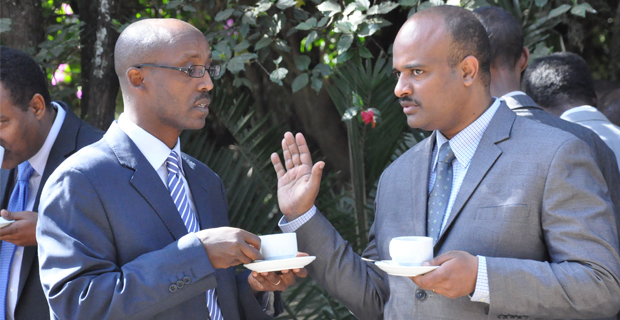

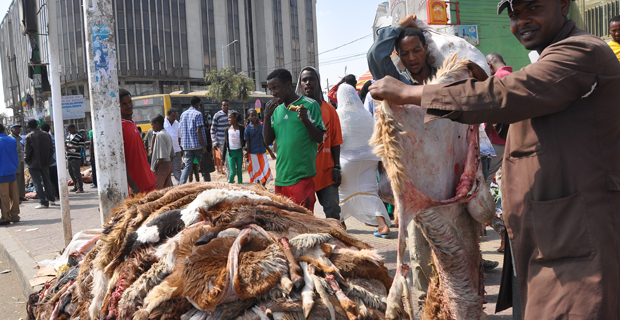
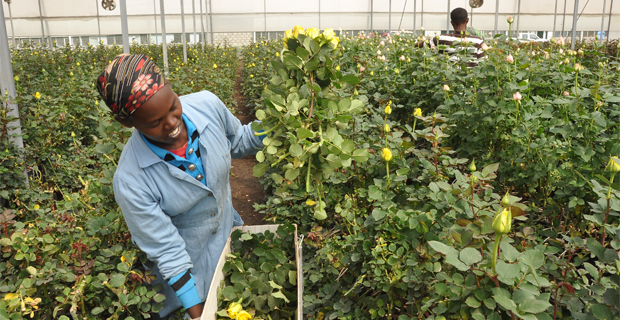
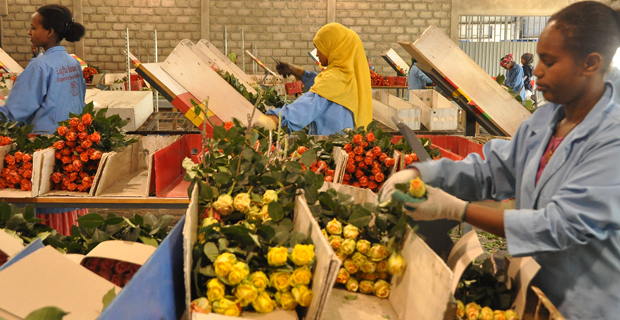
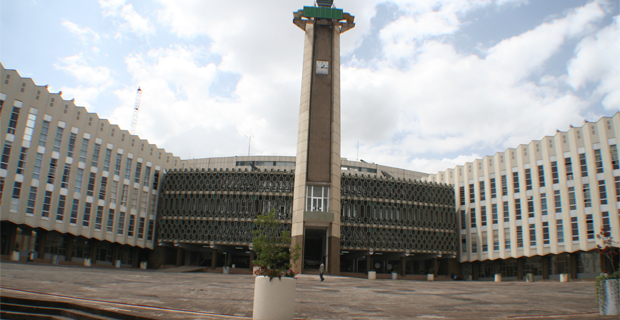
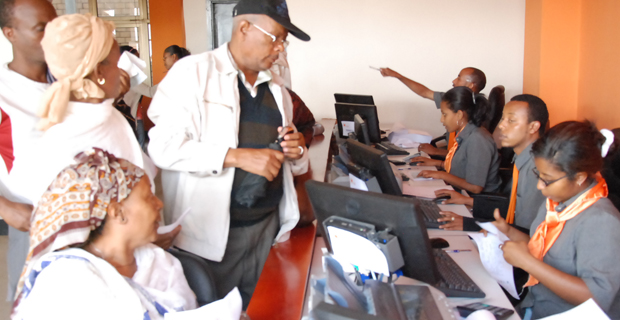
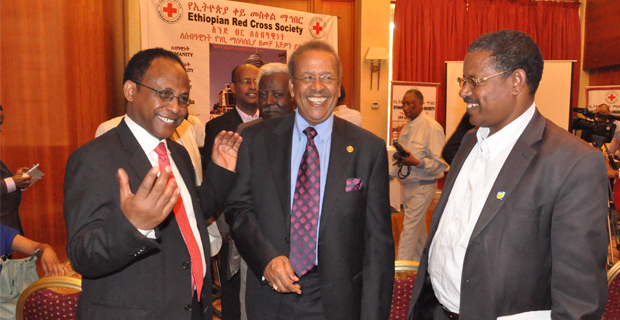




 VENTURES AFRICA – The World Bank has said in its recently published report “Global Economic Prospects,” that Foreign Direct Investment (FDI) into Africa grew by 16.2 percent to $43 billion in 2013, on the back of encouraging investment performance.
VENTURES AFRICA – The World Bank has said in its recently published report “Global Economic Prospects,” that Foreign Direct Investment (FDI) into Africa grew by 16.2 percent to $43 billion in 2013, on the back of encouraging investment performance.


